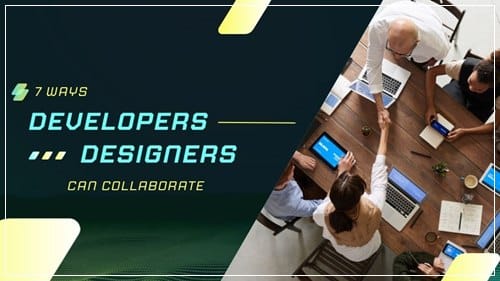
Designers and developers must maintain a balanced relationship when it comes to completing construction projects. While developers often wield the final say in the outcome of a project, designers play an integral role in bringing the developer’s vision to life. To this end, both parties must discover ways to collaborate effectively and keep a project on track. Consider the following seven tips that can facilitate seamless collaboration throughout the development process.
1. Delegate Tasks
One of the most common obstacles to collaboration is ambiguity regarding responsibilities. Construction projects rely on an extensive team of professionals, and if there is any lack of clarity regarding who is responsible for what, tasks will quickly fall by the wayside. It’s important for designers and developers to work together and decide upon the ideal delegation of tasks. This process should identify who is responsible for approving aspects of the construction process, for example, and which party is responsible for finalizing blueprints.
2. Use the Right Tools
Effective collaboration also demands that designers and developers invest in tools that allow for more effective communication. Construction document control, for example, offers all construction stakeholders the opportunity to share files, collaborate on designs, and minimize the time that’s wasted on administrative tasks. This can give designers and developers alike the ability to work more efficiently and eliminate the barriers that often thwart collaboration. More importantly, a CDE incorporates state-of-the-art cyber security tools that can prevent ransomware attacks and keep data secure.
3. Designate Decision-Making Duties
It is equally important for designers and developers to allocate decision-making duties throughout the construction process. Generally, designers are responsible for all decisions related to the architecture and aesthetic appearance of a project, while the developer may be tasked with overseeing the budget or practical concerns of the project. In some cases, though, these responsibilities may shift or overlap, which is why it’s always important to explicate responsibilities before any conflict can arise. This will foster accountability and prevent potential miscommunications.
4. Share the Vision
Although designers and developers handle different parts of the construction process, they must be united in their vision of the finished project. Working toward a shared vision can be a challenge, but it’s possible when both parties commit to collaboration. Designers must work to understand the expectations of a project’s developer, and similarly, developers must work to give designers the tools they need to realize a project’s potential. Together, both parties can create blueprints for an attainable development and a realistic construction plan.
5. Make Compromises
Even the most productive collaboration will demand that each party compromises from time to time. This is certainly true in the context of a construction partnership, where difficult decisions will surely emerge. In order to maintain progress, it’s important for all stakeholders to remain committed to compromise. If a developer’s budget is at odds with a designer’s plans, for example, it’s imperative that one of these parties be able to compromise so that progress on the project does not come to a standstill.
6. Set Clear Priorities
Setting clear priorities is almost as important as being willing to compromise. Before launching a construction project, developers and designers must identify the primary priorities that will guide its progress — is it more important to stay within the budget, for example, or is it more important to stick to the project’s timeline? Questions like these will help you identify the most important goals, and this will help your team stay focused throughout the duration of the project. It will also ensure that each party is held responsible for its role in helping the team achieve its goals. This can minimize potential delays that could stem from unclear priorities and responsibilities.
7. Develop a Plan
Finally, a construction project’s developers and designers must collaborate to develop a plan for the project. An effective construction plan will include a tentative schedule for the completion of the development, a budget outlining all of the expected costs, and a set of blueprints showing the proposed structure. In addition to collaboration between a developer and designer, this plan will likely require input from other stakeholders in the construction process, too, including investors, architects, and safety supervisors. The plan must be thoroughly reviewed and approved by all relevant stakeholders before the construction project begins. Facilitating collaboration is a vital step in any construction project, and collaboration between designers and developers is especially important. These two roles are responsible for the appearance and execution of a project, so their ability to work together is essential.
Leave a Reply
You must be logged in to post a comment.